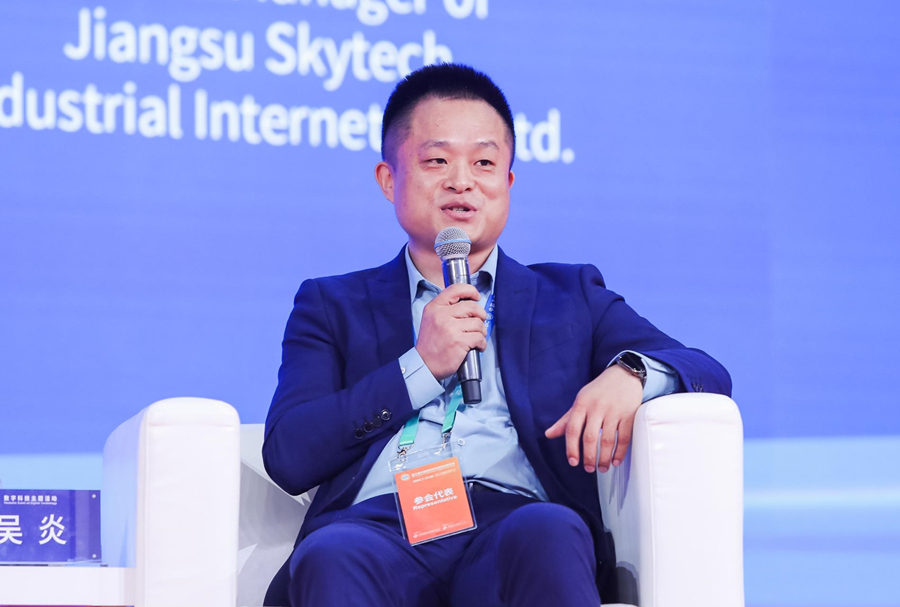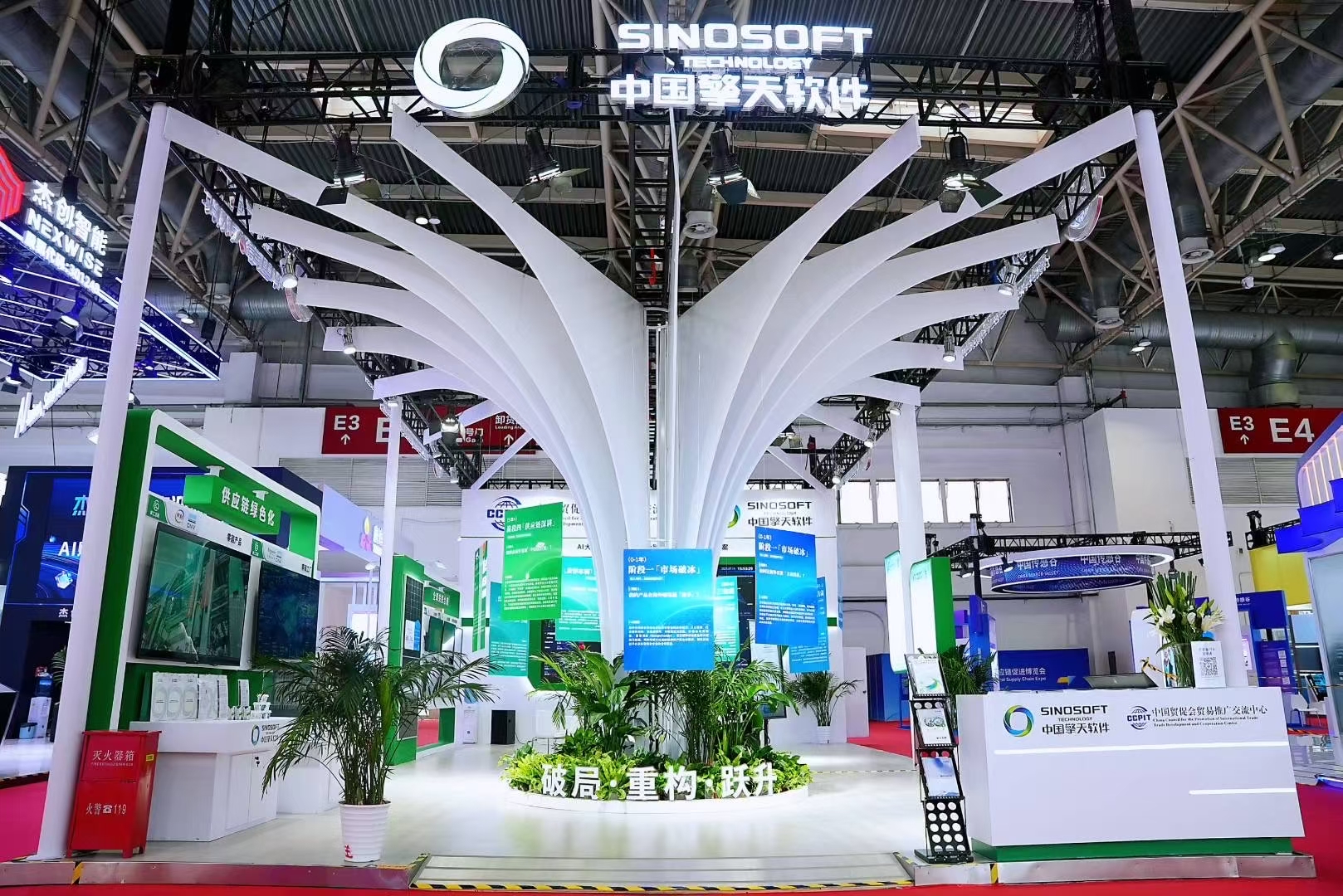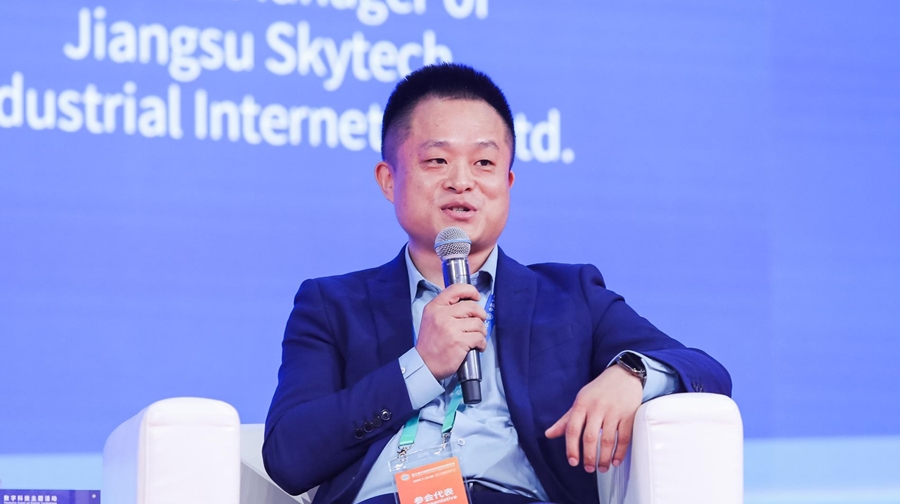Chinese firms with global ambitions are increasingly turning to AI and big data to overcome trade obstacles, according to a technology executive at the recently concluded third China International Supply Chain Expo (CISCE).

Wu Yan, general manager of Jiangsu Skytech Industrial Internet Co., speaks at an event during the third China International Supply Chain Expo in Beijing, July 18, 2025. [Photo courtesy of the CISCE Organizing Committee]
Wu Yan, general manager of Jiangsu Skytech Industrial Internet Co., a subsidiary of Sinosoft Technology, told China.org.cn that inquiries have surged as U.S. tariffs create new compliance challenges. Sinosoft provides digital trade and compliance services using AI and big data, having served nearly 200,000 enterprises.
"Many enterprises came to us asking how to navigate these changes," Wu said. "Our large language model instantly captures new regulatory updates online and refreshes daily to meet these demands."
The company made its debut at the five-day expo, which ended Sunday, after observing a significant increase in export-oriented enterprises seeking their services in recent years.
At the expo, Jiangsu Skytech was joined by two other Sinosoft Technology Group subsidiaries — Nanjing Skytech Quanshuitong Information Co. and Nanjing Skytech Co. — to showcase products and achievements.
Sinosoft also partnered with the China Council for the Promotion of International Trade (CCPIT) Trade Development & Cooperation Center to launch a new platform for industrial and supply chain restructuring, powered by the company's AI model.
"Whether it's customs compliance, cross-border legal services, or green low-carbon exports, these reflect companies' most pressing pain points and genuine needs," Wu said.
"As a technology software company, we leverage digital and intelligent solutions to assist them," Wu added. "This drives us to share the insights we've gained— especially from working with supply chain enterprises — along with our innovative application cases."

The booth of Sinosoft Technology during the China International Supply Chain Expo in Beijing, July 18, 2025. [Photo courtesy of the CISCE Organizing Committee]
The company's AI system demonstrates concrete results. "For example, we helped a company from Jiangsu province that was exporting to South Korea. Using the vertical large model, we optimized its global strategy — lowering tariffs by 74%, cutting carbon emissions by 45% and improving efficiency by 80%. Previously, such calculations relied on manual labor or multiple business systems, but now the process takes just minutes," Wu said.
The AI model draws from over 20 years of experience in export tax rebate service and two decades of digital legal services, including collaborations with China's Ministry of Justice. It continuously monitors global policy and tariff changes, relieving enterprises from the burden of manually tracking foreign regulatory updates, according to Wu.
Wu explained that today's tariff mechanisms operate within a complex web of global trade agreements, including multilateral and bilateral free trade agreements, alongside volatile regulations such as evolving U.S. trade policies.
For small- and medium-sized enterprises operating on thin margins, the model provides affordable access to insights on avoiding legal pitfalls, meeting carbon compliance standards, and managing supply chain constraints, Wu said.
The new industrial and supply chain restructuring solution, developed in partnership with the CCPIT Trade Development & Cooperation Center, is a comprehensive system designed to help businesses navigate the challenges of going global.
Wu emphasized the company's commitment to working more closely with ecosystem partners it connected with at the expo to drive supply chain transformation. He highlighted the importance of understanding the real-world obstacles industrial and supply chain companies face when going global.
As an industrial software provider, the company aims to integrate cutting-edge technologies into practical solutions that address core business pain points through innovation, Wu noted.


 Share:
Share: 




 京公網安備 11010802027341號
京公網安備 11010802027341號